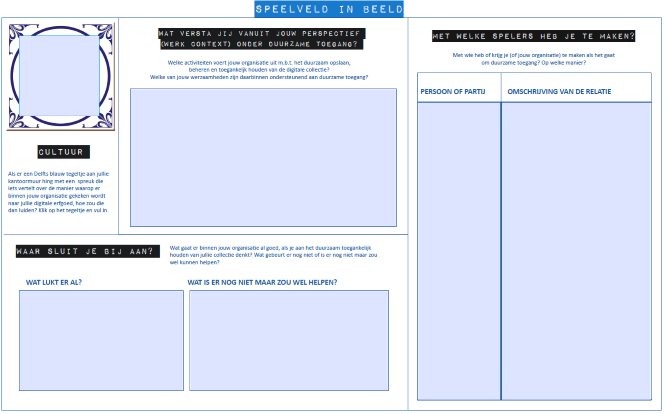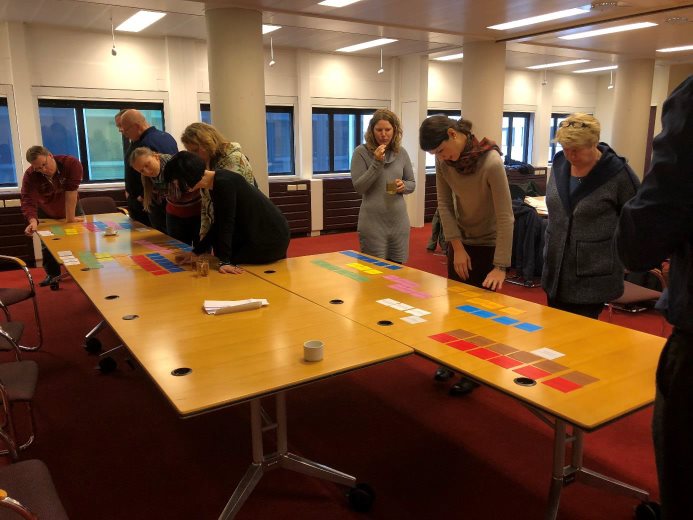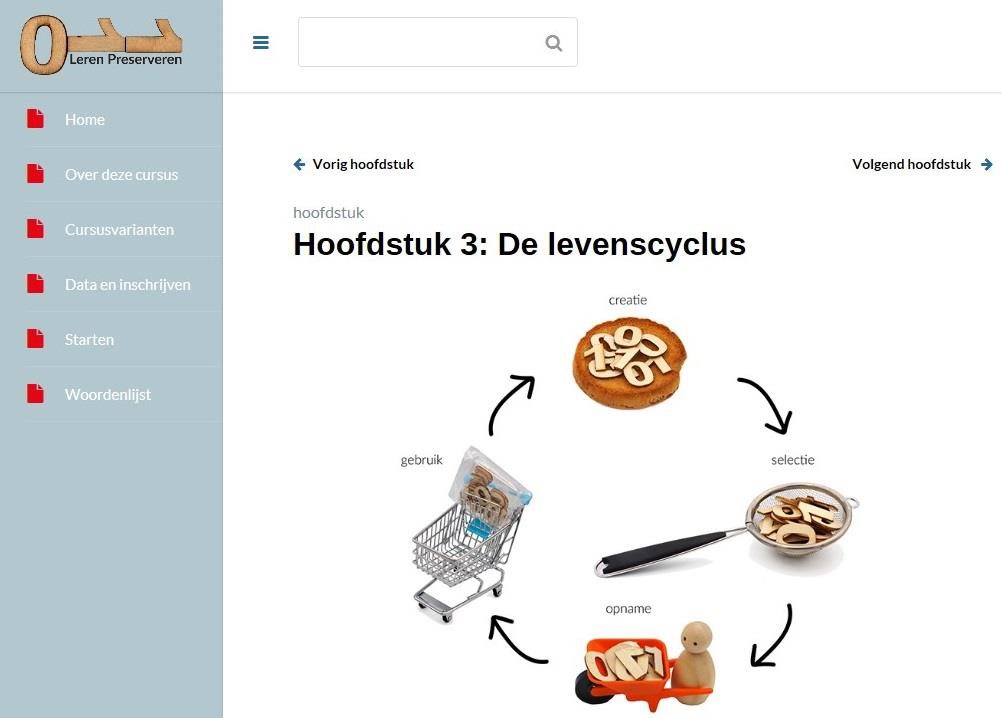The Digital Heritage Network (DHN) in the Netherlands is a partnership focused on the development of a system of national utilities and services for the visibility, usability and sustainability of digital heritage. In the sustainability program a lot of knowledge was developed and shared in conferences, study days, etc. However, not all practitioners that have to deal with digital materials and its preservation found their way in the amount of information and sometimes did not know how to apply concepts on digital preservation in their daily practice.
Het Nieuwe Instituut (HNI, Rotterdam), keeper of the Netherlands Collection of Architecture and Urban Planning, had developed, as a case study for the DHN, a digital preservation learning environment and group training in 2016. This was the starting point for the development of what is now Leren Preserveren. The aim for Leren Preserveren was to achieve a ‘blended’ learning environment (online learning and group training) that had to be generic and scalable, with a modular structure, and that could be widely used in the heritage sector.
A project team was formed within the DHN and a specialist was commissioned to make a design. Through a literature study and a small personal interview survey learning needs were assessed. This showed that on the one hand practitioners are looking for clear roadmaps, best practices and how-to guides and on the other hand do not know what they don’t know. Leren Preserveren helps by giving a clearer picture of digital preservation, enabling participants to ask the right questions and to know where to start.
The learning aim is that after completing the training the participants are able to describe the relevance of digital preservation for their own organization and their own role, to recognize challenges and relate them to possible solutions. Learning also stimulates participants to become part of the preservation community and supports developing competences like analytical capacities and organizational, quality and risk awareness.

The module B assignment asks students to describe the situation in their own organization. This shows how digital preservation is perceived and makes them better aware of risks and challenges within the context of the organization and who they need. By sharing the results students learn how organizations cope with issues.
The learning process is organised in three modules. In module A the language and issues of digital preservation are taught. This makes the participant able to formulate his own learning needs and to communicate on digital preservation within the organization and with experts. In module B the participant learns to operate within the playing field. What do you have to know and who do you need in relation to technique, infrastructure, processes, policies and legal matters? The participant becomes able to name his own roles and responsibilities. In module C participants become able to recognize issues within their own practice, and prioritise and take the first steps and actions. In the group training each module ends with the making of an assignment in which taught concepts are related to daily practice.
This clear learning path supports both the online learning environment and the group training. The three day group training is characterised by interaction, peer learning, active didactic work forms and expert sessions. Module assignments are discussed in the group forum and in the training. Online each module is finished with a test. This has made Leren Preserveren an inspiring learning experience, that was highly valued by the participants.

Active work form: assessing – the order of – steps to be taken on the road to a trusted digital repository.

Chapter 3 of module A
After piloting the group training in the spring of 2017, Leren Preserveren was launched during a mini symposium in September 2017. Leren Preserveren was discussed within the framework of learning needs and the existing range of knowledge platforms, education and training. The symposium was attended by several parties interested in digital preservation education, such as archival and heritage (bachelor and master) studies, heritage organizations and professional and sector organizations.Issues like positioning Leren Preserveren in relation to regular education, how to keep up with rapid digital changes and how to serve bigger and smaller organizations with developing both general and specific skills, were addressed.
The training now has served three groups of 14 participants (with an average participant rating of 8, out of a maximum of 10). The training is offered twice a year. It was also given as an in-company training at Het Nieuwe Instituut and used once in a bachelor curriculum for heritage professionals at the Amsterdam University of Applied Sciences. Participants were satisfied about the amount of interaction and peer learning, and indicated that they not only learned a lot about digital preservation but on their own organizations as well. This means that we have been fairly successful in developing desired behavioural competences. Leren Preserveren is also appreciated for its reference book function.
“ I expected that I would learn about digital preservation, but I learned a lot about my own organization too”.
“Compliments for the very nice training. It gave me new insights and I know now how to begin small and finish big”.
Further evaluation will tell us more about the results and effectiveness of Leren Perserveren, that has become a very recognizable part of the DHN sustainability program and has shown to support community building. Evaluations and a first ‘alumni day’ in September 2018 will tell us more.
The project phase of Leren Preserveren is finished, and it has now become part of the aforementioned system of national utilities and services for digital heritage. With a fully booked 2018 autumn edition, a high participant rating and participants appreciating the interaction and peer learning, we look forward to continue to evolve Leren Preserveren and in doing so continue to serve the digital heritage community.






























































































































